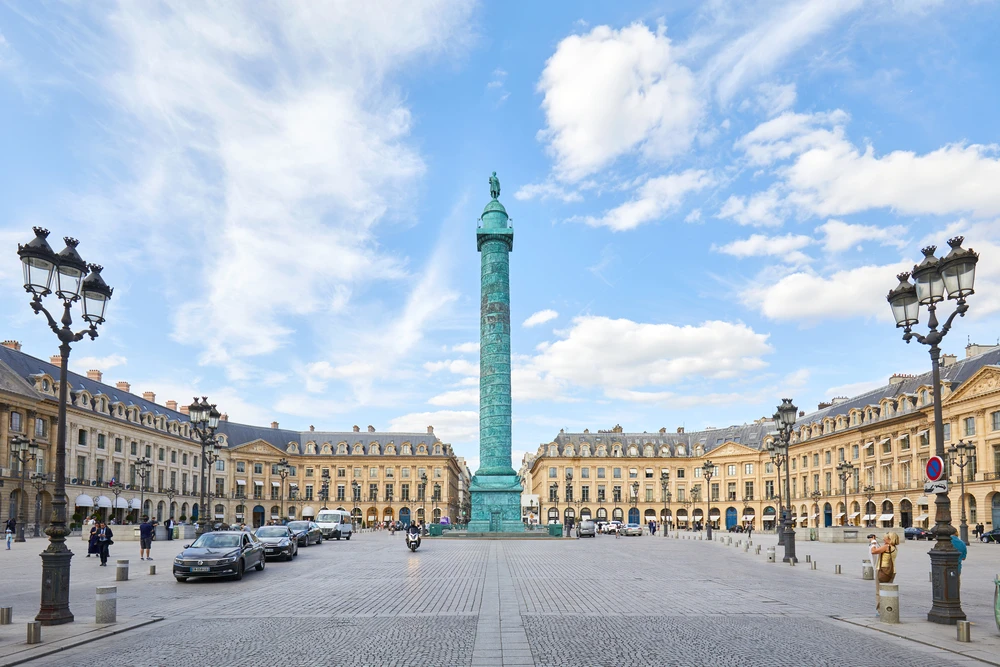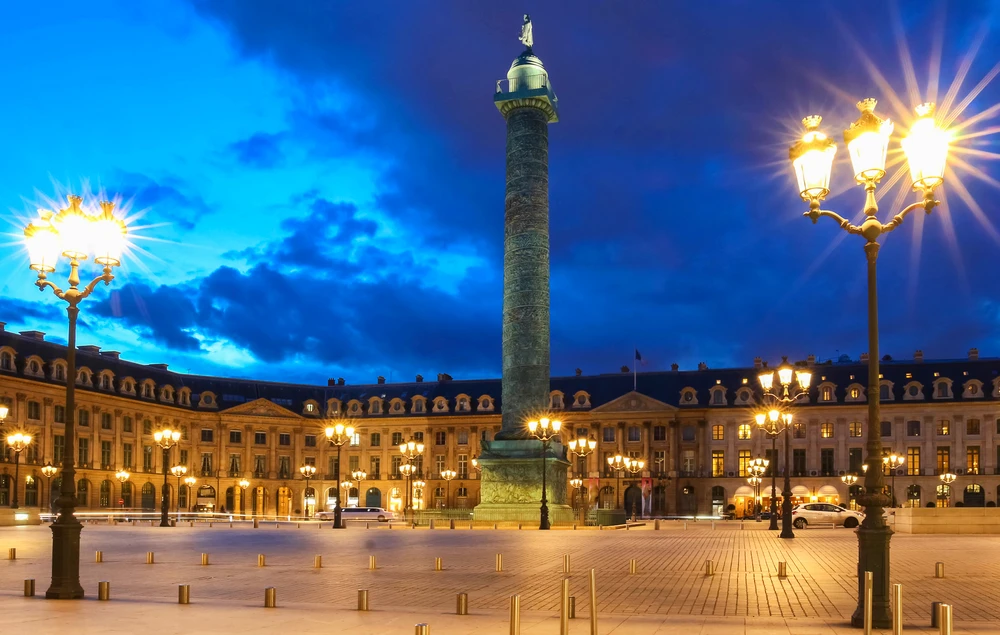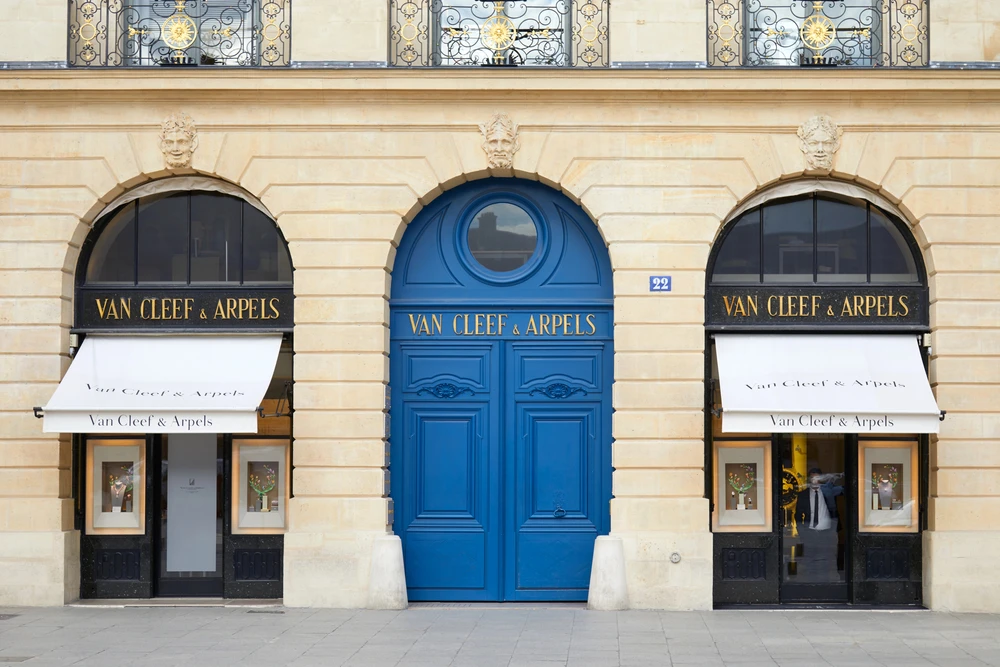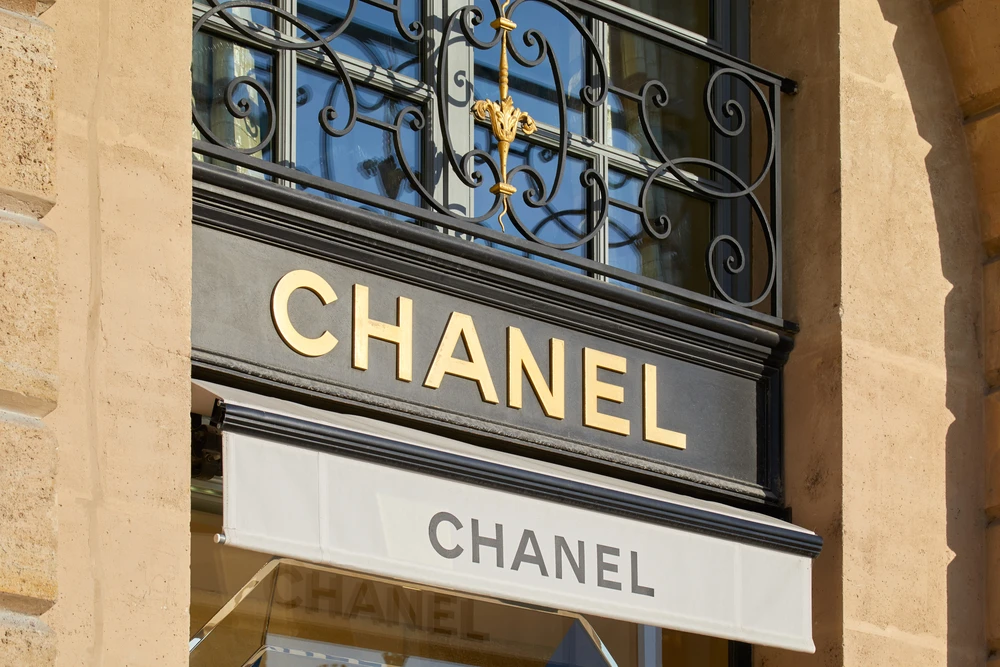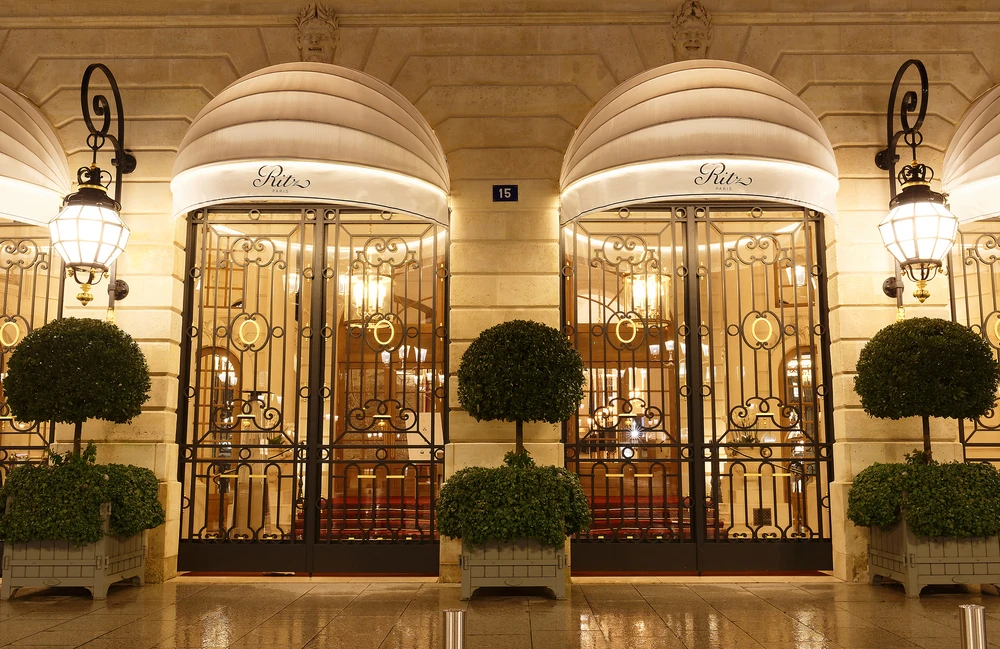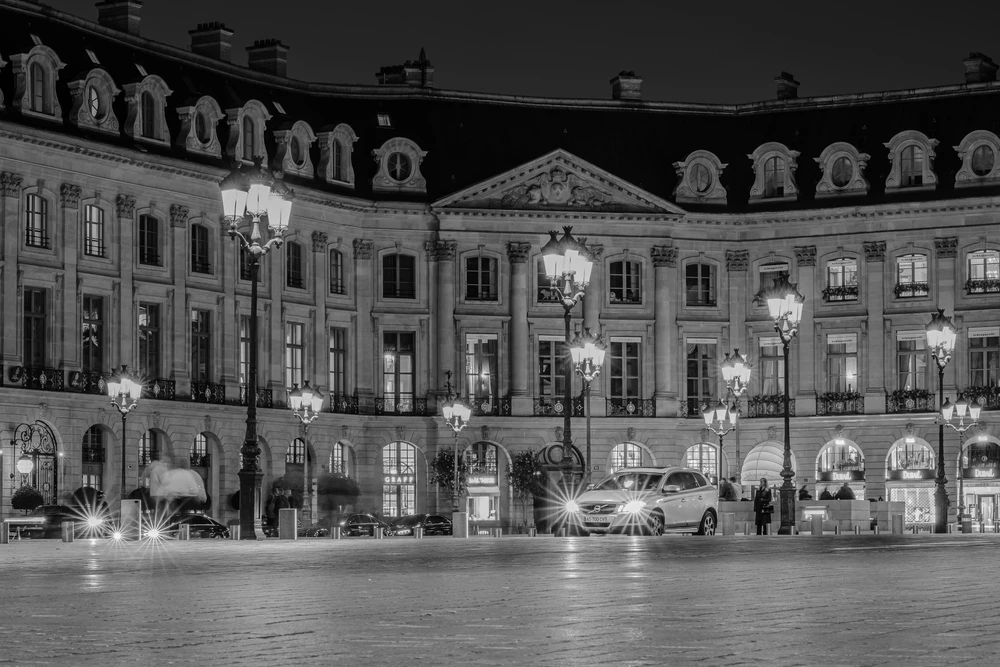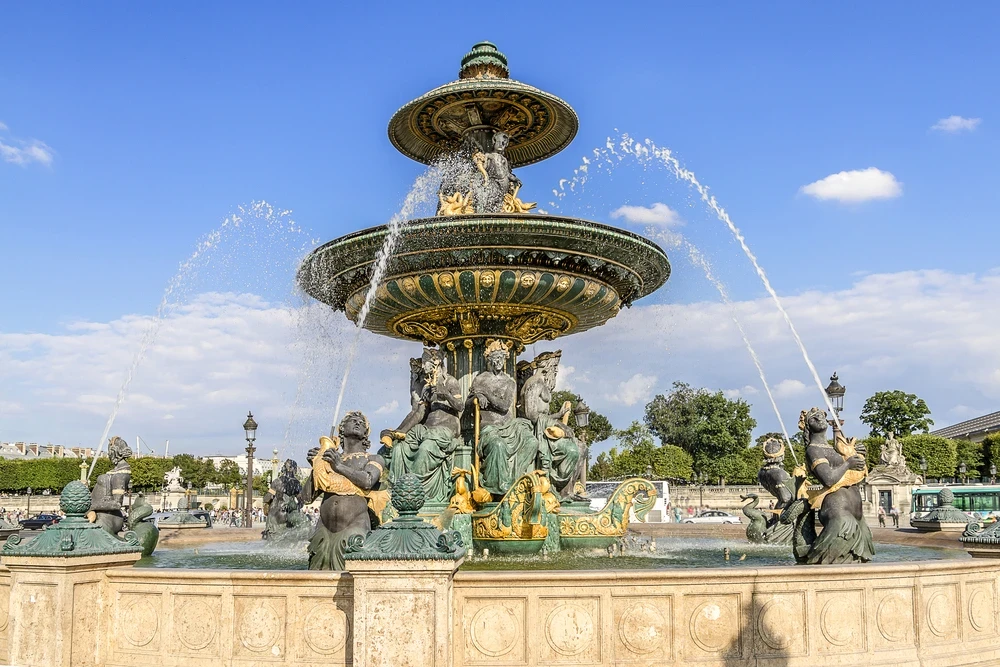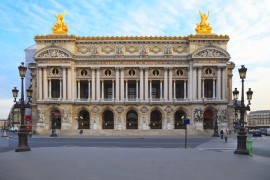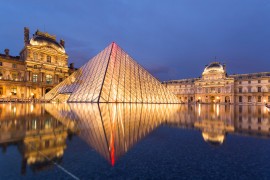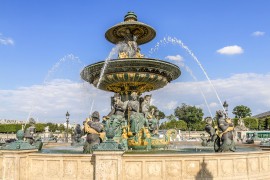Place Vendôme: what to see
It's a royal square, meaning that it was dedicated to a sovereign. Louis XIV, in this case, who was ousted during the French Revolution and replaced by Napoleon in the 19th century. It was Jules Hardouin-Mansart who imagined this square, which is called Place Vendôme because it was built on the site of the Hôtel de Vendôme, a vast building constructed by the will of César de Vendôme (1598-1665), bastard son of Henri IV. It was in the 19th century that it began to become what it is today: the heart of the Parisian and French luxury world.
Facades
The beauty of Place Vendôme lies in the harmony of its facades. Photo chosen by monsieurdefrance.com: AndreaA. via depositphotos
They were conceived as a whole. What's often surprising is that we started by building the facades, and the owners did as they pleased behind them, as long as they didn't touch the facades. This is what gives the Place its beauty. The buildings, which were originally private mansions, consist of an arcaded first floor, two upper floors and a Mansard-style slate roof.
The Vendôme column
The Colonne d'Austerlitz, or Colonne Vendôme, at night in Paris. Photo chosen by monsieurdefrance.com: KovalenkovPetr via depositphotos
It's been there since 1875. Standing 44.3 meters high and 3.50 meters thick, it is a stone column adorned with bronze plates said to have been made from Austrian cannon. Inspired by Trajan's column in Rome, it depicts the Austerlitz campaign and is crowned by a statue of Napoleon 1st in Caesar's garb. It contains a 180-step staircase.
The staircase entrance to the Vendôme column in Paris / Photo chosen by monsieurdefrance.com: nikolpetr via depositphotos
This is the 2nd column erected there, and the 4th statue. Originally, in the center of Place Vendôme, there was an equestrian statue of Louis XIV, inaugurated in 1699, which was destroyed during the French Revolution when everything symbolizing the monarchy was pulled down. What remains is a horse's hoof. In 1810, the first Vendôme column was erected by sculptors Jacques Gondouin and Jean-Baptiste Bergeret. In 1831, Napoleon as Caesar was replaced by Napoleon in the general's uniform he wore when he was still called Bonaparte. In 1864, the little corporal was removed and a copy of the first statue was installed. In 1871, the column was pulled down by the Communards during the Paris Commune. They saw it as a symbol of Napoleon 1st's tyranny at a time when his nephew, Napoleon III, had just surrendered at Sedan and the 2nd Empire was crumbling. Knocked down but not destroyed, the column and its statue were reinstalled between 1873 and 1875. They have remained there ever since, despite a German bombardment in 1918, which caused some damage to the square, but not to the Vendôme column.
.
The great luxury houses are at Place Vendôme
A luxury boutique. Photo chosen by monsieurdefrance.com: AndreaA. via dépositphotos
Place Vendôme is home to the largest concentration of luxury houses in the world, as well as the largest concentration of France's finest craftsmen and women. These men and women are the best in their field, mainly in jewelry at this end of Paris. Rue de la Paix, which overlooks the square, extends this concentration of great houses. In the 19th century, it was here that elegant women came to dress, meeting tailors, milliners and jewelers. Place Vendôme is home to Boucheron, the first jeweller to set up shop here in 1893, as well as Dior, Chopart, Louis Vuitton joaillerie, Cartier, Chanel, Van Cleef et Arpels (since 1906), Breguet, Rolex and Mauboussin.
Chanel is here. Photo chosen by monsieurdefrance.com:AndreaA. via depositphotos
Le Ritz
The Ritz is the palace on Place Vendôme in Paris. Photo chosen by monsieurdefrance.com: KovalenkovPetr via depositphotos
The Ritz is a 5-star hotel housed in what used to be 2 private mansions: the Hôtel de Gramont and the Hôtel de Crozat. Part of it was used as an administrative building in the 19th century, before César RITZ turned it into the palace we know today. The hotel was born in 1898 from the merger of the two previous buildings. The great chef Auguste Escoffier (1846-1935) worked here for many years. From the outset, the hotel has welcomed celebrities such as Cocteau, Colette, Marcel Proust and, more recently, Lady Diana (from where she left in a car with the owner's son, Dodi Al Fayed, on the day of her death in Paris in 1997). Madonna is a regular these days.
Place Vendôme also takes on its own beauty at night. Photo chosen by monsieurdefrance.com: Pathosphoto via depositphotos
The Ritz has 600 employees, including100 in the kitchens of the 3 restaurants alone. Inside, there are 71 rooms and 71 suites. There's also a swimming pool, a spa, a hammam...
The Ministry of Justice
Place Vendôme is also home to the Ministry of Justice. It has been housed in the Hôtel de Bourvallais since 1718, at 11 and 13 place Vendôme. It was extensively refurbished in the most grandiose style in the 19th century. You can take a virtual tour here.
What to see near Place Vendôme
The Place de la Concorde is nearby. Photo selected by monsieurdefrance.com via Shutterstock.
When you're at Place Vendôme, you can discover many of Paris' landmarks and monuments in less than a quarter of an hour's walk. You're not far from the Tuileries Gardens and the Louvre. You can also walk along the Ruedu Faubourg Saint Honoré, which is the Rue du Palais de l'Elysée. At the end of rue de la Paix, you'll come across the Opéra. And you're also very close to the most beautiful square in Paris: the Place de la Concorde with its statues and magnigious lampposts, on the banks of the Seine and at the start of the Champs-Elysées: the most beautiful avenue in the world.
How to get to Place Vendôme in Paris
Address:
Place Vendôme 75 001 PARIS
Parking lots :
Parking indigo "vendôme" 28 place Vendôme 75 001 PARIS
Metro :
Opéra station, lines 3, 7 and 8; Pyramides station: lines 3 and 7 Tuileries station, line 1.
Bus:
Lines 20 27 43 45 52

